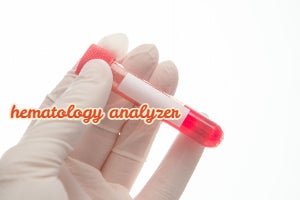July 29, 2021

A patient suffered from cough, expectoration and fever for three days in the emergency department. During the physical examination, he heard only rough breath sounds without rales, and suspected acute respiratory infection. So the doctor issued a blood test list. After taking 0.5 ml of venous blood from the patient, the examiner said to the patient: "You can get the result after waiting for two minutes in the waiting room." The patient was surprised after hearing it, and the result would be available in two minutes? After returning, the test result report was printed out and displayed in front of him. Holding the report sheet, he asked in a puzzled manner: "I have visited the emergency department before and had a routine blood test, but it takes more than half an hour to wait for the result. Now it's so fast. There is a result, and there are so many test results, and the results..." The patient did not go on. The implication was that the test results in such a short time were unreliable? The patient’s doubts are understandable, because he does not understand the current situation. The routine blood test in large hospitals has been freed from the previous manual operation, and automated hematology analyzer are used. Automated testing instruments are used to test blood routines. Not only the results are faster, but the test results are also more accurate and reliable. The items to be tested are It has also increased from a few items to more than 20 items, which is the result of scientific and technological progress. Since the Dutch scientist Ravenhoek invented the microscope in the 17th century, it was not until 1851 that German scientists reported the manual method of counting blood cells under the microscope. After the continuous efforts of many scientists, they continued to improve the routine blood test methods. In the 1950s, American scientist Kurt invented the electronic blood cell counter. Although the blood cell counter could only detect red blood cells and white blood cells at that time, it was also an epoch-making breakthrough and contribution. In the past 40 years, with the use of electronic computers in blood cell counters, electronic blood cell counters have been rapidly developed and continuously updated. Now the Kurt blood cell counter has entered the third and fourth generations. Two items for counting red and white blood cells (an additional hemoglobin analyzer is required for hemoglobin measurement), that is to say, from the 50s to 60s, the two instruments combined into a set only detect three items, and it has developed to one instrument today. The instrument simultaneously detects more than 20 items in the three blood systems of the red blood cell system, hemoglobin, white blood cells and their classification, and platelet system within 0.5 to 1 minute. The fourth-generation instrument has been able to perform 5 classifications of white blood cells, so today's blood cell counters have been "upgraded" to be called hematology analyzers, and blood routine examinations are "upgraded" to be called hematology analysis. According to the blood routine results obtained by manual operation, most patients with anemia cannot judge the type of anemia, let alone provide the cause of the anemia. Today's hematology analyzers can detect and report more than ten parameters of the red system. Experienced examiners and doctors can immediately determine whether the patient has anemia. If there is anemia, whether it is macrocytic, orthocytic or small cell anemia ; If it is small cell hypochromic anemia, iron deficiency anemia or anemia caused by hemoglobinopathy can also be diagnosed immediately. Many of the above items cannot be done manually. According to the results of blood analysis of this patient, the red system and platelet system are both within the normal range, but the white blood cells are high. The diagnosis of acute bronchitis can be made in combination with the patient's clinical symptoms and signs. The above shows that with modern hematology analyzers, the diagnosis and treatment of many diseases can provide timely basis for the advancement and development of clinical medicine.
Related articles recommended
Principle of blood cell analyzer
Learn more about blood cell analyzer (cbc)
Hematology analyzer measurement and reading analysis. Red blood cell aggregation device
Posted by: ehduewdh at
10:01 AM
| Comments (1)
| Add Comment
Post contains 709 words, total size 5 kb.
37 queries taking 0.0645 seconds, 60 records returned.
Powered by Minx 1.1.6c-pink.









